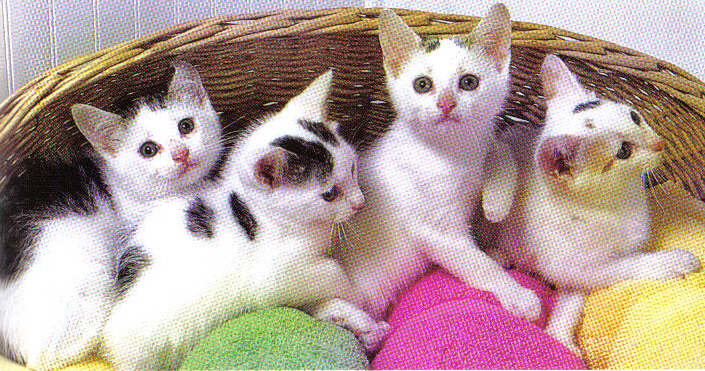WE ONLY CARRY THE FINEST TOP DOG K-9 LEATHER GEAR.At the new Canine Storewe will only sell high quality dog products. We pride ouselves in providing high quality products at an affordable price.
|
|
|
Recognizing a Cat is Sick
|
|
Recognizing a Cat is Sick
A new public education campaign promotes awareness of subtle behavior changes associated with illness in cats.
|
 |
Cats are good at concealing illnesses so good that their owners often don't realize when they need help. Now, a new public awareness campaign is teaching cat owners how to recognize subtle signs of sickness so they'll know when to contact their veterinarian. The Great Cat Watch, for Wellness Sake! campaign, sponsored by the American Association of Feline Practitioners (Hillsborough, N.J.) and Fort Dodge Animal Health (Overland Park, Kan.), calls attention to behavior changes associated with illness in cats. According to a first-of-its-kind feline behavior report by the AAFP, several signs may indicate disease in cats. Inappropriate urination and defecation. Contrary to popular belief, these behaviors are not a cat's way of "getting back at its owner. More likely, they are signs of an underlying medical condition. A cat that is urinating inappropriately may have a urinary tract infection, lower urinary tract disease, kidney disease or diabetes mellitus. The cat also might have arthritis, which makes getting into the litter box difficult.

Changes in interactions. Cats usually enjoy interactions with their human family and often with other pets. Changes in these interactions, including aggression, may be signs of disease, pain, fear and anxiety.Changes in activity. Increased activity may signal hyperthyroidism. Decreases in activity may be signs of several conditions, including arthritis, discomfort from joint disease or systemic illnesses. In general, a cat doesn't slow down just because it's old. Changes in sleeping habits. There's a difference between normal catnapping and abnormal lethargy. The average adult cat sleeps 16 to 18 hours per day, but responds quickly to usual stimuli such as the owner walking into the room or preparing food. A cat that sleeps more than usual or shows discomfort lying down or getting up may have an underlying disease.
Changes in food and water consumption. Decreased food intake or problems chewing can indicate disorders ranging from poor dental health to cancer. Increased food intake may signal diabetes mellitus, hyperthyroidism or other health problems. Increased water intake may be an early indicator of thyroid problems, kidney disease, diabetes or other problems. Unexplained weight loss or gain. Cats with hyperthyroidism or diabetes mellitus can lose weight despite good appetites. Many other diseases cause both appetite and weight loss. A cat that goes to its food dish but backs away without eating may be nauseated. Changes in grooming habits. Cats usually are fastidious groomers. A cat with greasy or matted hair or bald patches in the coat may have an underlying disease. Furthermore, a cat that has difficulty grooming itself may have conditions such as fear, anxiety or obesity. Increased grooming may signal a skin problem.
Increased vocalization or howling. These behaviors, more common in older cats, often accompany an underlying condition. Many cats vocalize more when they are in pain or anxious.Bad breath. This is an early indicator of an oral problem. Studies show 70 percent of cats have gum disease as early as age 3. Owners should have their pet's teeth checked every six months to prevent or treat dental disease. Regular home brushing and veterinary dental care prevent bad breath, pain, tooth loss and spread of infection to other organs.
For more information, visit www.catwellness.org.

THANK YOU for stopping by and visiting.
About once a week or so I will write a pet related article or alerts about food recalls, new over the counter medication, proposed pet laws etc. The alerts and news items will be in the E-mail, most lengthy articles will be linked back to my web-site. If you would like to get an E-mail notification, I would appreciated very much if you would sign up and give me permission to E-mail you. Just send us a blank E-mail to
pet_articles@caninestore1.com
|
|
|